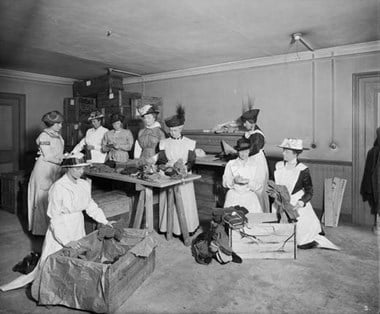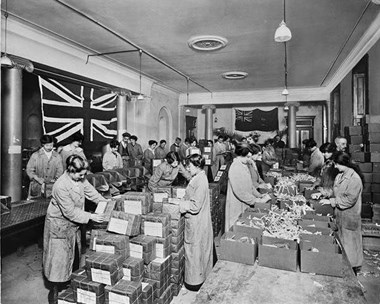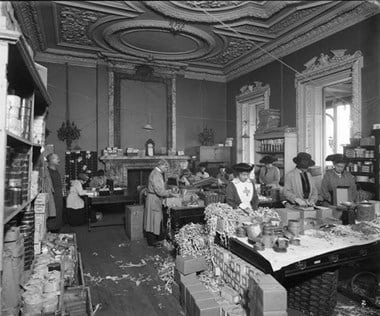Wartime Volunteers
The same patriotic enthusiasm that led many men to join the colours in August 1914 was also shown by many who through age or gender were excluded from the armed forces.
In the beginning much of the civilian effort was supported by fund raising and voluntary effort with little government direction. Many well-to-do women served at home and abroad unpaid in the Voluntary Aid Detachments (VADs) and in the Female Auxiliary Nursing Yeomanry (FANY). Others formed the Women’s Emergency Corps and along with associated groups organised canteens and clubs for soldiers, assisted with agricultural work and gave aid to refugees.
Young people, especially organised through the Boy Scout and Girl Guide movements, contributed much voluntary labour. They were trained in first aid and offered relief to refugees and wounded service men, acted as messengers, and helped with agricultural work. The Scouts (unarmed) guarded important railway installations, telegraph and telephone lines, and watched the coast for invaders, while the Guides collected sphagnum moss for wound dressing.
As this gallery from the Historic England Archives illustrates many buildings took on new roles in the service of voluntary bodies. A Historic England funded study found a Victorian house in Newcastle-under-Lyme, Staffordshire, registered as a War Hospital Supply Depot producing bandages and dressings, and in High Barnet, London, a greengrocer’s shop was converted into a place of rest and shelter for convalescing troops.
Wartime Volunteers
Please click on the gallery images to enlarge.
-
First World War: Land
One of the features of industrialised, mechanised, 20th-century warfare was its hunger for land.
-
First World War: Sea
At the outbreak of the First World War Great Britain was the world’s greatest naval power.
-
First World War: Air
Historic England has identified the most significant airfields and airfield buildings of the First World War.








